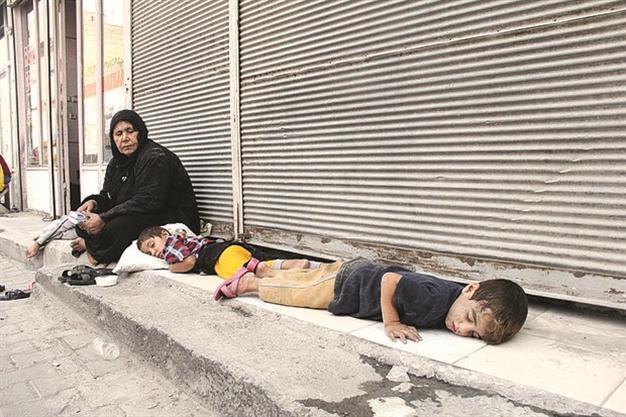Report: Turkey has second highest child income poverty in OECD
ISTANBUL

DHA photo
Turkey has the second highest child income poverty rate in the OECD countries following Israel, according to the OECD’s latest “How’s Life?” 2015 report.The average Turkish child experiences poor material living conditions compared to children in other OECD countries, the report revealed. Turkey has the second highest child income poverty rate in the OECD, as 28.4 percent of Turkish children live in a household with a disposable income of less than half of the Turkish median income, according to the report.
Turkey also has the second largest rise in the child poverty rate, with an increase of more than 5 percent between 2007 and 2011, following Hungary. In two-thirds of all OECD countries, the child poverty rate increased over those four years, according to the report.
Across all OECD countries there are large inequalities in the well-being of children, the report revealed.
Income poverty affects one child in seven in OECD countries, while 10 percent of children live in jobless households and report being bullied in school. Since the economic crisis, child poverty rates have risen in two-thirds of OECD countries. In most OECD countries, the poverty rate for children is higher than for the population in general.
There are also striking inequalities in the well-being of children as associated with the socio-economic background of their families. Children from better-off families have better health, higher skills, higher civic engagement and better relationships with their parents and peers. Students from more advantaged families are also less likely to be bullied and more likely to feel a sense of belonging in school. These findings suggest that inequalities in well-being among adults translate into inequalities in opportunities for their children.
In Turkey, there are very wide differences in educational deprivation between children from higher and lower socio-economic backgrounds. Children from higher socio-economic backgrounds also experience higher life satisfaction levels than children from lower socio-economic backgrounds in Turkey, the report revealed.
The reading skills and creative problem-solving skills of Turkish students lie substantially below the OECD average level. Some 22.2 percent of teenagers in Turkey aged 15 to 19 are not in employment, education or training, considerably higher than the OECD average of 7.1 percent. Since 2007, Turkey has seen substantial improvements in the rate of infant mortality and low birth weights, as well as teenage birth rates, said the report, while also noting all these rates remain among the highest in the OECD.
“How’s Life?” is published every two years and provides a picture of well-being in OECD countries and other major economies by bringing together a set of well-being indicators considered essential to a good life.
















